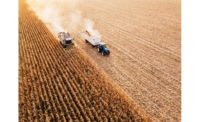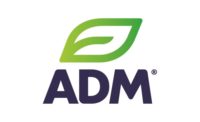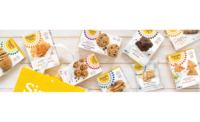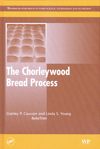Snack Food & Wholesale Bakery was recently able to catch up with Christine Cochran, executive director, Grain Foods Foundation, to talk about COVID-19 trends in the grain industry.
Liz Parker: How have different grain-related topics helped frame COVID-19 throughout 2020?
Christine Cochran: Bread and grains played a consistent and dominant, yet varied role throughout COVID-related media coverage.
At the beginning of lockdown, we saw two major areas of focus:
- Headlines surrounding consumers panic buying bread and flour, which brought our nation’s supply chain into focus
- News media and social media coverage of a home baking renaissance that took center stage and reinforced the fundamental place bread has in our lives.
Then, as we settled into our quarantine routines and realized that there would be no shortage of bread in our homes, we saw the conversation shift toward nutrition and wellness. With Americans of all ages and types craving comfort at home during an incredibly stressful year, families sought nutritious recipes that also satisfied their emotional wellness—and grain recipes, like a loaf of bread or hearty bowl of pasta, played a big role in this trend.
Coverage reflected the fact that, instead of shunning carbs for fad diets, consumers are reaching for sustainable lifestyle changes that are less restrictive and make room for nutritious foods that also bring comfort and happiness. For centuries, bread has done exactly that—and, in a way, the pandemic simply reminded us of that fact.
LP: Why does a shortage of bread cause panic when unavailable?
CC: As the saying goes, “bread is the staff of life,” and it truly is fundamental.
Last spring, as the COVID pandemic was coming into focus, the Grain Foods Foundation proved this after commissioning a study on comfort foods. In that study, we learned Americans place bread on their list of comfort foods along with ice cream, candy, and chips. However, unlike the ice cream, candy, and chips, Americans also place bread on their list of healthful and nutritious foods. The takeaway is that bread occupies a unique place on the American plate – it provides the rare combination of comfort and nutrition, both during times both uncertain and normal. That duality is the heart of wellness.
LP: How has personal storytelling shaped last year’s coverage of bread/the grain industry?
CC: Since last March, Americans and people the world over have shared a collective experience unlike any other. Yet all individuals and families have also simultaneously had a personal experience.
With this in mind, GFF relied on personal storytelling and touched on both themes to tell the story of our category. Through personal stories, readers could relate to the collective experience.
For example, we called on our Scientific Advisory Board members to tell their personal stories, buoyed by their expertise. Sylvia Melendez Klinger, who lives with her husband, mother and two college-aged children, shared her experience of and lessons learned by losing 20 pounds during quarantine. Her story was particularly moving because she speaks with authority and provides science-based nutritional information as a registered dietician, but also offered relatability because she was managing her role as a small business owner, mother, daughter, and wife.
LP: How did GFF quickly mobilize to raise awareness of grain foods and facts?
CC: Since our inception in 2004, the Foundation has always worked to be a reliable and trusted resource for both media and consumers. However, we had no idea how essential that commitment would prove to be in 2020, when our diverse efforts included:
- Early in the pandemic, we launched a comfort food survey to gauge consumers’ consumption of and perceptions of various “comfort foods.” As we predicted, the results highlighted the importance of grain-based foods not only in terms of nutrition but in terms of comfort.
- At the same time, we proactively offered our insights on topics related to the food supply chain, flour and yeast availability, and the economic forces at play in a pandemic—essentially, serving as a conduit between millers, bakers, and processors and consumers, assuring them that bread was being made and they would have it.
- Throughout the pandemic, our Scientific Advisory Board members served as a powerful resource for reporters working to provide consumers with facts over fiction. One key learning over 2020 is that consumers are very capable of understanding scientific nuance, and we are optimistic that this trend will carry beyond the pandemic and inform health and nutrition reporting.
- Finally, as demand for tactical advice increased, the Foundation developed and promoted recipes for healthful grain foods to enjoy at home. We did this because although we know our consumers love the versatility of grain food products, creativity was called for as families found themselves making all three meals in-home.
LP: What does last year’s attention on and coverage of grain foods mean for the industry, going forward?
CC: We are optimistic the wellness trend will continue.
Prior to the pandemic, we saw this trend growing, but it really blossomed in 2020. As people began thinking beyond individual nutrients and started thinking about the meals or snacks that would not only bring their family together but also satisfy all palates—because eating is about so much more than the consumption of calories—we saw a positive halo surround grain foods. They really are the foods that love us back. They are a unifying staple that brings sought-after satiety, are incredibly pleasing to a wide variety of palettes, and are always affordable and accessible. If you are thinking about holistic wellness, grain foods fit perfectly.
This moment in time is unique. Since the Atkins diet craze in the late 90s, our industry has battled to tell our story. We have always been drowned out by the megaphones of fad diets and general negativity. Today, we see momentum in consumer perception supporting our category—something we have not seen in the last two to three decades. Now is the time for the category to press forward and reinforce that positive story with our own megaphone. The Breadbasket Checkoff, which is currently being considered by industry, would be an excellent tool to capitalize on this unique opportunity.









